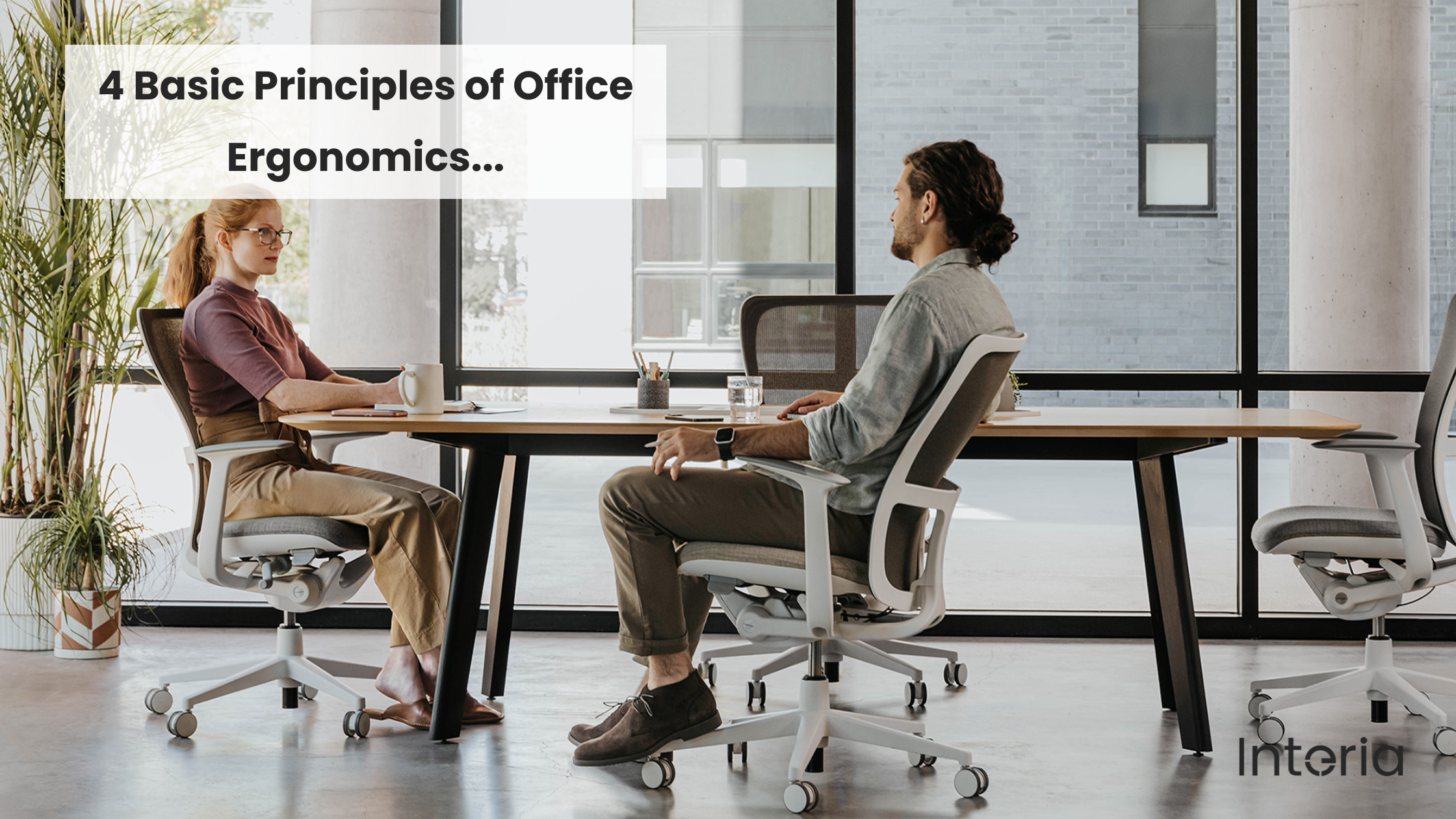
4 Basic Principles of Office Ergonomics…
Ergonomics is the science and practice of designing tasks and the workplace to synchronise with the capabilities and limitations of the human body. It is the study of the relationship between people, their physical environment and the equipment that they use.
When setting up your modern office furniture, start with your desk first as it helps to determine the placement of nearly all the other office furniture and equipment you will use.
When choosing an office desk or workstation, consider the tasks that are to be performed, the number of users (single or multiple) and the need for height adjustability (sit-stand desk). There should be sufficient room under the desk for the legs to move and stretch freely. Under-desk obstructions will restrict the ability of the operator to sit close to the edge of the desk and cause the operator to stretch forward to reach the keyboard.
Office desks and workstations with a height adjustable worktop are highly recommended by ergonomists as they allow the correct setup to be achieved without the use of foot stools or monitor risers.
When selecting the office chair, first consider the physical requirements of the user/s including height, size and any special considerations. The chair should provide good lumbar support, be easily adjusted from the seated position and have castors for mobility.
There are 4 basic adjustments on an office chair that should be easily adjustable whilst seated – The seat height, the seat angle, the back-rest height and the back angle.
The Desk/Chair Setup…
The first step involves setting up the correct chair height in relation to the keyboard height. The distance between the upper surface of the seat and the top of the keyboard needs to be set to suit the individual and provide a seated posture where the elbow forms a right angle when the wrists are placed in the typing position on the keyboard.
If this critical angle is not achieved it will put increased strain on the arms and wrists and affect the back posture. Raising or lowering the chair height will solve this problem but will impact on the next critical ergonomic setting.
The seated operator’s legs should be at right angles to the thighs with the feet placed flat on the floor. If the chosen seat height changes this angle it puts increased strain on the operators legs. If it causes them to dangle it will create pressure under the thighs at the front of the seat and restrict circulation. If desktop cant be lowered and the seat height must be raised, the use of an approved footrest will be required.
The Monitor Setup…
The monitor height should be set so that the top of the monitor is at eye level. The height setting for your monitor is correct if you can view the content whilst holding your head in a neutral posture where you don’t have to excessively bend the neck to look down or lift the chin to look up.
The brightness and contrast controls of your monitor should be adjusted to a level that produces a sharp, flicker and distortion free display. The brightness should be sufficient (above ambient lighting levels) and easy on the eyes.
The monitor-to-eye distance should be as a general rule, about an arm’s length away from the operators face. You need to choose and buy rigth computer desks.
Desktop Placement of Equipment/Materials
The arrangement on the desktop of the equipment and materials you use is determined by the regular tasks you perform. The frequency and duration of use will also impact on their placement.
The most frequently used objects should be within easy reach (the optimum or primary reach zone). These items usually include the keyboard, mouse, pens and notepads.
Less frequently used objects should be placed in the secondary zone, or the area that can be reached with the outstretched arm. Items usually placed in this zone include your telephone.
Items that are rarely used should be placed beyond the maximum reach zone. To access these items, it is recommended that you stand up.
Lighting…
Good lighting in the office is essential but must also be controlled. Your computer monitor should be away from, and if possible, at right angles to any windows or natural light sources to avoid glare. Lighting should be overhead and behind the operator when seated at the desk. The glare from natural light sources should be controlled with blinds, sunshades or tint fitted to the windows.
You can read about basic ergonomic principles in depth in this helpful article published by Ergonomics Plus…
www.ergo-plus.com/fundamental-ergonomic-principles
For more advice on creating productive and enjoyable workplaces, call the Office Fitout & Furniture specialists on +61 8 9359 1288
Posted at 4:10pm by JC
Labels Office Furniture Perth, Office Fitouts Perth, Office Desks Perth



